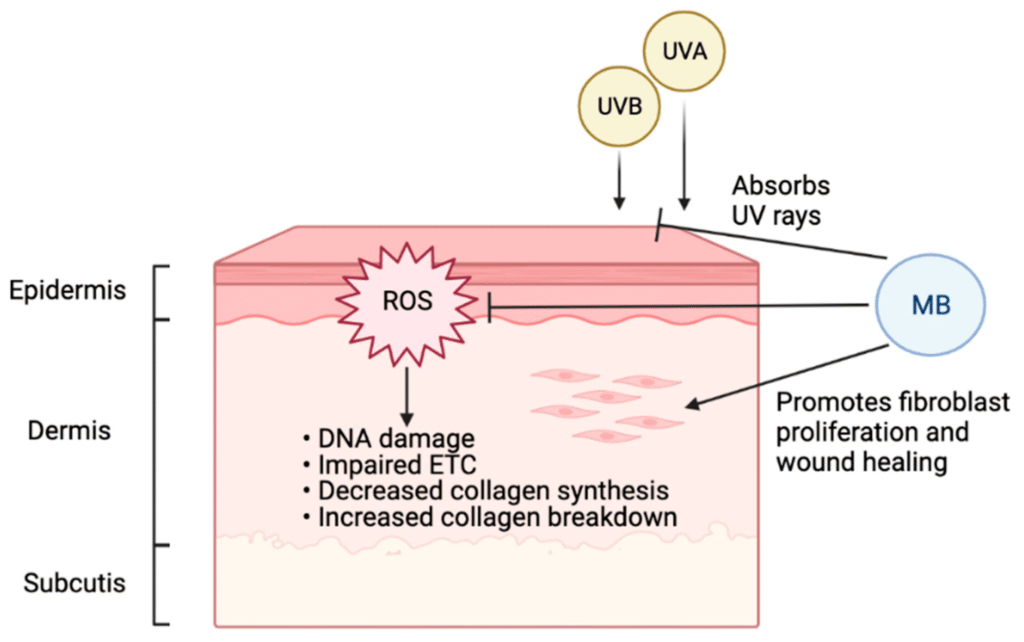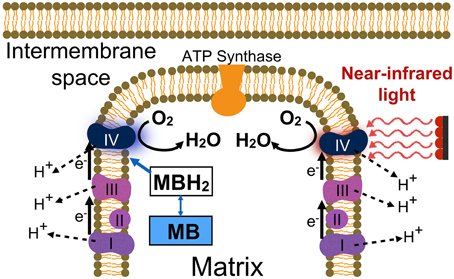
Have you ever considered the profound impact that small molecules can have on your body’s intricate systems? One such molecule, Methylene Blue, has gained attention for its potential role in promoting mitochondrial health. In this article, we’ll take a closer look at how Methylene Blue works and its implications for your overall well-being.
Understanding Mitochondrial Health
Mitochondria are often referred to as the powerhouses of the cell, responsible for producing adenosine triphosphate (ATP), which fuels cellular functions. The health of your mitochondria is crucial for your overall physical health and can influence everything from energy levels to the aging process.
The Role of Mitochondria
Mitochondria play several crucial roles in your cells:
- ATP Production: They convert nutrients and oxygen into ATP, which provides energy for your cells.
- Regulation of Metabolism: Mitochondria are involved in metabolic pathways that regulate how your body uses energy.
- Apoptosis: They can initiate programmed cell death, which is essential for removing damaged or unnecessary cells.
- Calcium Storage: Mitochondria help regulate calcium levels within the cell, important for various cellular functions.
Factors Affecting Mitochondrial Health
Numerous factors can impact mitochondrial health, including:
- Aging: As you age, mitochondrial function tends to decline, leading to a decrease in energy production and increased oxidative stress.
- Lifestyle Choices: Diet, exercise, and exposure to toxins can all affect how well your mitochondria function.
- Chronic Diseases: Conditions such as diabetes, obesity, and neurodegenerative diseases may be linked to mitochondrial dysfunction.
Understanding the significance of these factors sets the foundation for exploring how Methylene Blue can influence mitochondrial health.
What is Methylene Blue?
Methylene Blue (MB) is a synthetic dye that has long been used in various medical applications. Historically, it has been employed as a medication to treat conditions such as malaria and methemoglobinemia. However, recent studies have illuminated its intriguing potential in the realm of mitochondrial health.
Chemical Properties of Methylene Blue
Chemically, Methylene Blue is a redox agent. It can exist in two forms: an oxidized form and a reduced form. This ability to switch between oxidation states allows it to play a role in various redox reactions, making it a fascinating candidate for enhancing mitochondrial function.
Historical Medical Uses
Methylene Blue has a storied past in medicine:
- Antimalarial Agent: Initially used to treat malaria, it has shown effectiveness in clearing parasites from the bloodstream.
- Methemoglobinemia Treatment: It is used to treat this blood disorder, where hemoglobin is unable to effectively release oxygen to tissues.
- Neuroprotective Effects: Recent research points towards MB’s potential in neuroprotection, providing hope for conditions such as Alzheimer’s and Parkinson’s disease.
As research continues, it becomes evident that Methylene Blue may serve a broader purpose than what was originally understood.
Mechanism of Action: How Methylene Blue Enhances Mitochondrial Health
Understanding how Methylene Blue interacts with mitochondrial biology is key to unlocking its potential benefits. Several mechanisms have been proposed.
Enhancing ATP Production
One of the notable effects of Methylene Blue is its capacity to enhance ATP production.
How Does This Occur?
- Electron Transport Chain: Methylene Blue acts as an electron carrier in the electron transport chain, improving the efficiency of ATP synthesis.
- Oxygen Utilization: It assists in the utilization of oxygen, optimizing mitochondrial respiration even when oxygen levels are low.
The result is a boost in ATP availability, providing additional energy for cellular processes.
Reducing Oxidative Stress
Methylene Blue has antioxidant properties that can help mitigate oxidative stress, a common factor in mitochondrial dysfunction.
How Does This Work?
- Scavenging Free Radicals: It can neutralize free radicals, reducing cellular damage.
- Modulating Antioxidant Enzymes: Methylene Blue may enhance the activity of endogenous antioxidant enzymes, further protecting mitochondria.
By addressing oxidative stress, Methylene Blue contributes to a more balanced cellular environment.
Improving Mitochondrial Dynamics
Mitochondrial dynamics, including fission and fusion processes, are crucial for maintaining mitochondrial health.
The Role of Methylene Blue
- Promoting Fusion: Methylene Blue has been shown to promote mitochondrial fusion, enabling the mixing of mitochondrial content and enhancing metabolic efficiency.
- Facilitating Fission: It can also support the fission process, ensuring that damaged mitochondria are removed and replaced effectively.
Through these dynamics, Methylene Blue can help maintain a healthy population of mitochondria within cells.
Clinical Implications of Methylene Blue
Given the promising effects of Methylene Blue on mitochondrial health, its clinical applications are beginning to emerge.
Neurological Disorders
Alzheimer’s Disease
Research suggests that Methylene Blue may have neuroprotective properties relevant to Alzheimer’s disease.
Mechanisms at Play
- Reducing Tau Aggregation: By interacting with tau proteins, MB may reduce aggregation, a hallmark of Alzheimer’s pathology.
- Enhancing Cognitive Function: Studies show that MB can improve cognitive function in models of Alzheimer’s, suggesting potential therapeutic pathways.
Parkinson’s Disease
Similar research into Parkinson’s has shown potential benefits.
Therapeutic Benefits
- Levodopa Sensitivity: Methylene Blue may improve the effectiveness of levodopa, a common treatment for Parkinson’s.
- Neuroprotection: Initial findings indicate that it can protect dopaminergic neurons, potentially slowing disease progression.
Cardiovascular Health
Methylene Blue has also been investigated in the context of cardiovascular health.
Mechanisms for Improvement
- Improving Mitochondrial Function in Cardiomyocytes: MB may enhance mitochondrial function in heart cells, contributing to better heart health.
- Potential for Heart Failure Treatment: Research is ongoing to consider its role in treating heart failure and other cardiovascular conditions.
Therapeutic Uses Beyond Neurology
The benefits of Methylene Blue are not limited to neurological conditions. Its multifaceted nature means that it could also have applications in:
- Antimicrobial Treatments: Its historical use as an antimicrobial agent suggests potential applications in treating infections.
- Metabolic Disorders: There is a growing interest in its capabilities to improve metabolic health, particularly in conditions like obesity and diabetes.

Administration and Dosage of Methylene Blue
Understanding how to administer Methylene Blue is crucial for maximizing its therapeutic potential.
Routes of Administration
Methylene Blue can be administered via various routes, including:
- Oral: Common for supplements or lower doses.
- Intravenous: Typically used in clinical settings for more immediate effects.
- Topical: Sometimes used in wound treatment.
Recommended Dosages
The appropriate dosage will vary based on the specific use and individual patient needs. Research suggests varying dosages according to the condition being treated.
| Condition | Recommended Dosage |
|---|---|
| Alzheimer’s Disease | 60-120 mg/day |
| Parkinson’s Disease | 100-250 mg/day |
| Methemoglobinemia | 1-2 mg/kg IV |
| General Antioxidant Use | 5-10 mg/day |
Always consult with a healthcare provider before starting Methylene Blue to determine the right dosage for your circumstances.
Safety and Side Effects of Methylene Blue
While Methylene Blue presents various benefits, it is also essential to consider its safety profile and potential side effects.
Common Side Effects
- Urine Discoloration: A common and benign side effect; it can cause blue or green urine.
- Gastrointestinal Issues: Some individuals may experience nausea or abdominal discomfort.
- Increased Blood Pressure: In rare cases, it may elevate blood pressure, particularly at higher doses.
Contraindications and Drug Interactions
Methylene Blue is not suitable for everyone. Specific contraindications and interactions may include:
- Serotonin Syndrome: Caution is advised for individuals taking antidepressants that affect serotonin levels, as MB may increase the risk of serotonin syndrome.
- G6PD Deficiency: Individuals with this enzyme deficiency are at risk for hemolysis when taking Methylene Blue.
Always discuss your full medical history and medications with a healthcare professional prior to using Methylene Blue.

The Future of Methylene Blue in Mitochondrial Research
Methylene Blue presents a rich area for ongoing research, particularly concerning mitochondrial health and energetics.
Emerging Studies
Research continues to unveil the myriad ways in which Methylene Blue can positively influence mitochondrial function. Areas of interest include:
- Aging Research: Investigating MB’s potential to extend mitochondrial lifespan and function as you age.
- Mitochondrial Diseases: Evaluating its effectiveness in treating various rare mitochondrial disorders.
- Cellular Energy Metabolism: Understanding its role in optimizing cellular energy usage across different tissues.
Regulatory Outlook
As studies progress, Methylene Blue may undergo further examination for regulatory approval in new therapeutic areas. The results will likely influence how it’s prescribed and for which conditions.
Conclusion: Embracing the Power of Methylene Blue
The evidence surrounding Methylene Blue and its effects on mitochondrial health is compelling. As research accumulates, it becomes increasingly clear that this simple dye may hold the keys to addressing various health challenges, particularly those related to mitochondrial dysfunction.
Investing time in understanding how Methylene Blue works could unlock new avenues for enhancing your well-being, particularly if you are grappling with conditions influenced by mitochondrial health.
As you consider the potential benefits, engaging with healthcare professionals will ensure that you make informed decisions tailored to your health objectives. In the ongoing quest for improved health, Methylene Blue stands out as a remarkable, yet often overlooked, ally in the pursuit of thriving mitochondrial function and overall vitality.
